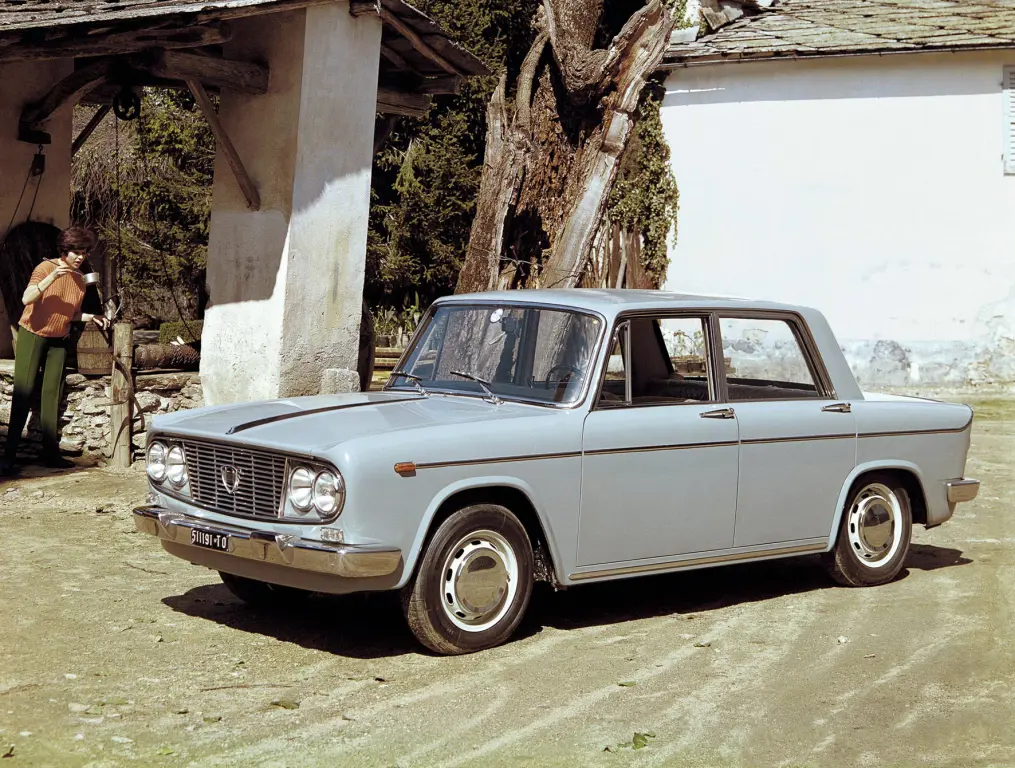The Lancia Fulvia Berlina at 60
23 March 2023
If you were visiting the Geneva Motor Show in 1963, the new model on the Lancia stand would probably have drawn your eye. The bodywork, by Piero Castagnero, was low-key in the manner of many bourgeoisie Italian saloons, but to lift the bonnet was to be mesmerised. The new Fulvia’s 1,091cc DOHC V4 engine driving with twin overhead camshafts was in the finest traditions of the company.
Many showgoers further marvelled at how one camshaft operated the exhaust valves and the other controlling the intake valves, with the cylinder angle allowing a single head. The Fulvia was also the first small FWD Lancia, and as The Daily Telegraph noted, it marked “a significant re-entry after many years by Lancia into mass production.”
The Fulvia replaced the Appia but shared almost no components with its predecessor. Dr. Antonio Fessia, Lancia’s Director of Engineering, advocated front-wheel-drive, commencing in 1960 with the Flavia Berlina. This philosophy ensured the Fulvia stood apart from the Alfa Romeo Giulia and the Fiat 1100D; sixty years ago, the only other Italian FWD small saloon was the Innocenti-built Morris 1100.

The engine layout of the Fulvia reflected Fessia’s belief that at least 63 per cent of a car’s weight should sit over the front wheels to avoid potential wheelspin and axle tramp. Your friendly local Lancia dealer would also tell you that the power plant, transmission, steering and suspension were all built around a subframe and the specification included all-disc brakes.
In its homeland, the Fulvia’s image was transport for the dynamic young lawyer, and it was the most expensive 1.1-litre car in its class. At that time, some Italians believed Fiat was for the masses, Alfa Romeo was for the sporting driver, and Lancia was for the connoisseur. In the UK, only the well-heeled would consider calling Lancia’s West End showroom on Hyde Park 7166 to arrange a test drive.
What the Fulvia did not offer the owner was especially sparkling performance, with a top speed of 85 mph and 0-60 in 23.5 seconds. Lancia’s solution was the 2C of 1964, with twin Solex carburettors and improved steering for the equivalent of another £85. The maximum speed was now 94 mph, with acceleration improved by over five seconds. The 2C proved so popular that sales of the original version ceased shortly afterwards.
The following year marked the introduction of the Coupe, also styled by Castagnero and it looks almost inevitably drew attention from the original Berlina. Yet the Fulvia saloon should never be overlooked. It was a car of the twilight of Lancia as an independent concern, debuting six years before Fiat’s takeover. One report from the 1964 London Motor Show reflected:
“Reports from Italy indicate that the Turin firm is in very serious financial difficulties, partly from recent Italian tax increases and partly, one suspects, from the rather uneconomical number of models being produced with such varying specifications.”
Above all, the Berlina appealed to motorists who appreciated the quality and integrity of its design. As Autocar stated in their 4th December 1964 edition, “There is value and workmanship to justify the higher-than-average price.”
